Genetics proves agriculture emerged much earlier and slower than thought
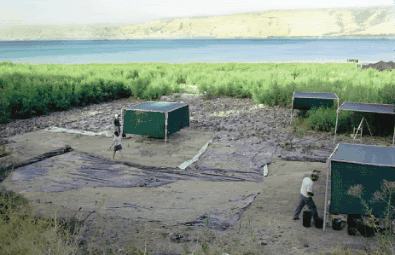
Until recently researchers thought the story of the origin of agriculture was one of a relatively sudden appearance of plant cultivation in the Near East around 10,000 years ago spreading quickly into Europe and dovetailing conveniently with ideas about how quickly language and population genes spread from the Near East to Europe. Initially, genetics appeared to support this idea but now cracks are beginning to appear in the evidence underpinning that model.
The team led by Dr Robin Allaby developed a new mathematical model that shows how plant agriculture actually began much earlier than first thought, well before the Younger Dryas (the last “big freeze” with glacial conditions in the higher latitudes of the Northern Hemisphere). It also shows that useful gene types could have actually taken thousands of years to become stable.
Up till now researchers believed in a rapid establishment of efficient agriculture which came about as artificial selection was easily able to dominate natural plant selection, and, crucially, as a consequence they thought most crops came from a single location and single domestication event.
However recent archaeological evidence has already begun to undermine this model pushing back the date of the first appearance of plant agriculture. The best example of this being the archaeological site Ohalo II in Syria (picture) where more than 90,000 plant fragments from 23,000 years ago show that wild cereals were being gathered over 10,000 years earlier than previously thought, and before the last glacial maximum (18,000-15,000 years ago).
The field of archaeobotany is also producing further evidence to undermine the quick development model. The tough rachis mutant is caused by a single recessive allele (one gene on a pair or group of genes), and this mutant is easily identifiable in the archaeological specimens as a jagged scar on the chaff of the plant noting an abscission (shedding of a body part) as opposed to the smooth abscission scar associated with the wild type brittle rachis.
Simply counting the proportion of chaff types in a sample gives a direct measure of frequency of the two different gene types in this plant. That study has shown that the tough rachis mutant appeared some 9,250 years ago and had not reached fixation over 3,000 years later even after the spread of agriculture into Europe was well underway. Studies like these have shown that the rise of the domestication syndrome was a slow process and that plant traits appeared in slow sequence, not together over a short period of time.
Genome wide surveys of crops such as einkorn and barley that in the past have suggested a single origin from a narrow geographical range, supporting the rapid establishment view, have long been in conflict with other gene studies. The most notable conflict is in the case of barley for which there is a large body of evidence that suggests more than one common ancestor was used in its development.
These challenges to the fast model of agricultural development need a new model to explain how and why the development was so slow and demonstrate why artificial selection of just one plant type does not have the expected quick result. This computer model has now been provided by the University of Warwick, the Institute of Archaeology, University College London, and Manchester Interdisciplinary Biocentre has outlined the new mathematical model in a paper published in Proceedings of the National Academy of Sciences and in a summary article in the Biologist:
 energy :: sustainability :: biomass :: bioenergy :: agriculture :: archaeology :: archaeobotany :: domestication :: genetics :: paleogenomics ::
energy :: sustainability :: biomass :: bioenergy :: agriculture :: archaeology :: archaeobotany :: domestication :: genetics :: paleogenomics :: Their paper entitled "The genetic expectations of a protracted model for the origins of domesticated crops" used computer simulations that showed that over time a cultivated population will become monophyletic (settle into one stable species) at a rate proportional to its population size as compared various gene variations in the wild populations. They found this rate of change matched closely the 3000 years it took the tough rachis mutant to become established:
Ironically, this process is actually accelerated if there is more than one
wild source population (in other words if attempts at domestication happen more than once) because any resulting hybrid between those domesticated populations then has a heightened differentiation compared with either one of the wild populations of the two parent plants.
This mathematical model also more supportive of a longer complex origin of plants through cross breeding of a number of attempts at domestication rather than a single plant type being selectively bred and from a single useful mutation that is selectively grown quickly out paces the benefits natural selection.
The lead researcher puts the findings into perspective:
This picture of protracted development of crops has major implications for the understanding of the biology of the domestication process and these strike chords with other areas of evolutionary biology.
This lengthy development should favour the close linkage of domestication syndrome trait genes which may become much more important because linked genes will not be broken up by gene flow – and this makes trait selection and retention easier. Interestingly, as more crop genomes become mapped, the close linkage of two or more domestication syndrome genes has been reported on several occasions.
This process has similarities to the evolution of ‘supergenes’ in which many genes cluster around a single locus to contribute to one overall purpose.
We now need to move this research area to a new level. Domestication was a complex process and can now be viewed more legitimately as the paragon of evolutionary process that Darwin originally recognized. There are many interacting factors involved that we know about operating on a wide range of levels from the gene to the farmer and climate – the challenge is to integrate them into a single story. - Dr Robyn Allaby
Picture: Excavations at Ohalo II, the 23,000 year old fishing camp on the Sea of Galilee, revealing a broad variety of semi-domesticated plant seeds. Credit: University of Haifa.
References:
Robin G. Allaby, Dorian Q. Fuller, Terence A. Brown, "The genetic expectations of a protracted model for the origins of domesticated crops", PNAS, September 16, 2008, vol.105, no.37, 13982-13986, doi: 10.1073/pnas.0803780105
Allaby, R.G., "The rise of plant domestication: life in the slow lane", Biologist, 2008, vol. 55, no. 2, pages 94-99
Article continues
 --------------
--------------
 Mongabay, a leading resource for news and perspectives on environmental and conservation issues related to the tropics, has launched Tropical Conservation Science - a new, open access academic e-journal. It will cover a wide variety of scientific and social studies on tropical ecosystems, their biodiversity and the threats posed to them.
Mongabay, a leading resource for news and perspectives on environmental and conservation issues related to the tropics, has launched Tropical Conservation Science - a new, open access academic e-journal. It will cover a wide variety of scientific and social studies on tropical ecosystems, their biodiversity and the threats posed to them.


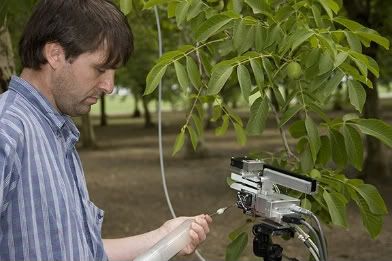
 Plants are unlikely to soak up more carbon dioxide from the air as the planet warms, new research suggests. A large team of scientists
Plants are unlikely to soak up more carbon dioxide from the air as the planet warms, new research suggests. A large team of scientists 

 Engineers and scientists at The University of Texas at Austin have achieved a breakthrough in the use of a one-atom thick structure called "graphene" as a new carbon-based material for storing electrical charge in ultracapacitor devices, perhaps paving the way for the massive installation of renewable energies such as wind and solar power.
Engineers and scientists at The University of Texas at Austin have achieved a breakthrough in the use of a one-atom thick structure called "graphene" as a new carbon-based material for storing electrical charge in ultracapacitor devices, perhaps paving the way for the massive installation of renewable energies such as wind and solar power.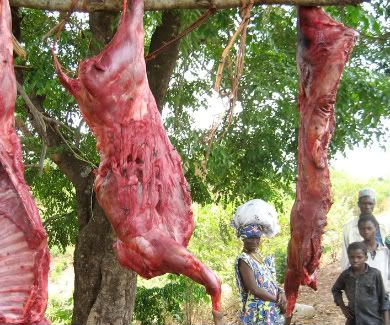



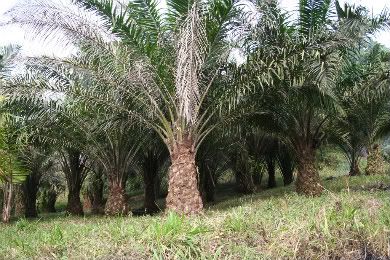
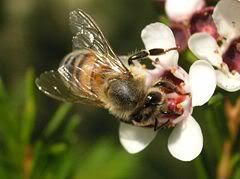 Earlier we reported on how smartly designed bioenergy systems can help restore ecosystems and protect or enhance their services to humanity. We zoomed in on the current crisis afflicting bee colonies, which suffer under the devastating 'colony collapse disorder'. Bioenergy crop systems offer an opportunity to restore the plant diversity needed by honey bees and other pollinators (
Earlier we reported on how smartly designed bioenergy systems can help restore ecosystems and protect or enhance their services to humanity. We zoomed in on the current crisis afflicting bee colonies, which suffer under the devastating 'colony collapse disorder'. Bioenergy crop systems offer an opportunity to restore the plant diversity needed by honey bees and other pollinators (







Saturday, September 20, 2008
Austrian study: heating with biomass remains two-thirds cheaper than heating oil - households save €1800 per year, sector creates thousands of jobs
Of the renewables, a clear winner is now emerging, capable of taking over the fossil fuel based heating sector: biomass. From Austria come new data showing the fuel remains a whopping two-thirds less costly than heating with fossil fuels at today's prices. Biomass heat is now touted in Europe as a way for families to beat inflation caused by high energy bills, while simultaneously contributing in a practical way to fight climate change. For governments, it has become a strategy to tackle growing energy poverty in a cost-effective manner.
According to a new study on the economics of biomass heating and the results of the European Biomass Action plan in Austria, the cost difference has grown further, because new wood pellet production plants have come online to meet increased demand. Biomass pellet trade too has grown strongly in Europe. According to the study, commissioned by industry association proPellets Austria, the average cost to heat a home with biomass is now around €1200 per year, whereas the cheapest alternative, heating oil, will set back families €3000 per year, based on projections for this year. (Graph: prices until the first quarter of 2008 - click to enlarge).
The data are based on a typical yearly consumption of 3000 liters of heating oil per household, with a heating oil price of €1/liter. Wood pellet prices were estimated to average €200 per ton. With these realistic numbers, individual households can save €1,800 per year by switching to renewable heat. The switch would also save 8,000 kilograms of CO2 per household.
Energy poverty and inflation resulting from high heating bills does not have to be taken for granted, it has become a real social and economic problem that has governments throughout the EU worried. On the level of Austria as a whole, the implementation of the Biomass Action plan, of which the renewable heating component is the most important one, has been very beneficial in this regard.
The Biomass Action plan projects that by 2020 around 400,000 households in Austria will have made the switch to biomass-fueled boilers to heat their homes. This goal can be achieved by relying on locally and sustainably sourced biomass. The implementation of the plan will bring 11,000 new jobs in the country's heating sector - today's trend shows this projection is realistic. The switch would save Austria some €800 million euros per year by 2020:
This summer Austria's Homeowners & Homebuilders Hotline - which informs citizens about renewables, conservation and efficiency in domestic buildings - has received twice as many applications for information about heating with biomass than in the summer of 2007, which was already a record year. Apparently, the relatively high acquisition and installation costs of a biomass heating unit doesn't deter Austrians to make the switch to renewable heating:
The price ticket for a new biomass heating installation for an average home is between 13,000 and 17,000 euros. Because the fuel is renewable and climate neutral, and thus helps the country achieve its Kyoto and EU goals, the state government contributes in paying 10% of this cost, whereas the federal government adds another 10%. This brings down costs to anywhere between 9,200 and 13,200 euros for a new boiler. For companies and industries, the incentive covers 30% of the costs.
At current heating oil prices, this investment is won back after 5 years. Modern biomass heating units at this price are fully automated and yield heat on-demand. They have a useful life of several decades.
The government wins back its subsidies by avoiding the purchase of carbon credits on the market. The scenario used in the study is based on a realistic carbon price of €17 per ton (today's price was €24.65 - September 20, 2008).
Biomass can be used for a myriad of products and services, from heat and power to bioproducts like plastics or building materials, to liquid fuels and hydrogen. But using it in the oldest, most simple way, - to heat your home - remains the more efficient option.
Most of the pellets used in Europe are wood pellets, but interest is growing in making them out of dedicated energy crops like miscanthus or fast growing trees like poplar.
A recent study by Dutch and Canadian researchers has shown that using this biomass as a solid fuel for heating purposes is 570% more efficient in reducing greenhouse gas emissions than using the resource for the production of liquid transportation fuels. Biomass pellets from miscanthus reduce GHG emissions by 7,600 to 13,100 kg CO2e per hectare. By comparison, soybean biodiesel and corn ethanol were found to reduce GHGs by a mere 900 and 1,500 kg CO2e per hectare respectively.
References:
Rakos, Christian, "Heizungstausch senkt Kosten für private Haushalte" [Making the switch strongly reduces costs for households], Study commission by proPellets Austria, September 2008.
Österreichischen Rundfunks: "Heizen mit Biomasse deutlich günstiger" [Heating with biomass clearly less costly] - September 18, 2008.
Biopact: Study: solid biofuels 570% more efficient than corn ethanol in reducing GHG emissions - September 10, 2008
Biopact: Biomass pellets revolution in Austria: 46% less costly than heating oil; most efficient way for households to reduce carbon footprint - October 06, 2007
Article continues
posted by Biopact team at 8:46 AM 2 comments links to this post
